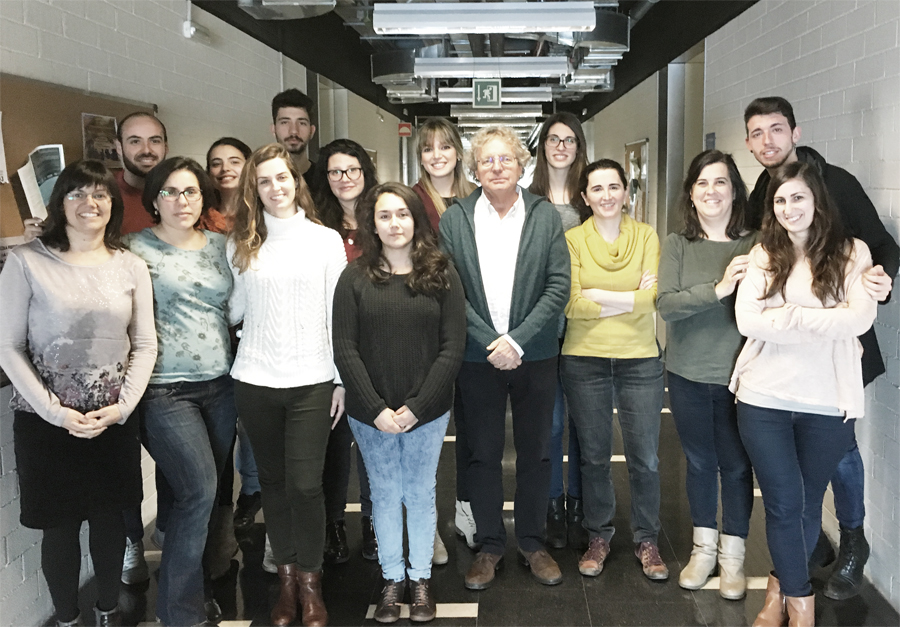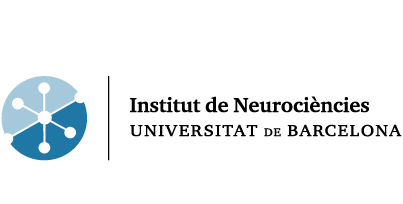
ISIDRO FERRER
Position: Professor
Research team
Ester Aso Perez
Collaborator
Marta Barrachina Castillo
Collaborator
mbarrachina (at) ub.edu
Irene Lopez-Gonzalez
Collaborator
Paula Garcia-Esparcia
Collaborator
Pol Andrés Benito
Collaborator
Margalida Frau Méndez
Collaborator
Margarita Carmona Murillo
Collaborator
margacarmona (at) ub.edu
Meritxell Puig Pinos
Collaborator
Raisa Camila Alvear Contreras
Collaborator
Franc Llorens
Collaborator
Jesus Moreno
Collaborator
Daniela Diaz Lucena
Collaborator
Antonella Consiglio
Collaborator
Contact details
Prof. Isidro Ferrer
Department of Pathology and Experimental Therapeutics
Faculty of Medicine. Feixa Llarga, s/n
08907 L’Hospitalet de Llobregat (Spain)
93 4035808
isidreferrer (at) ub.edu
Research Interests
Study of new alterations in metabolic pathways, and of clusters and hubs in the aging nervous system and at early stages of neurodegenerative diseases including Alzheimer’s disease (AD), Parkinson’s disease (PD), Dementia with Lewy Bodies, tauopathies, other frontotemporal lobar degenerations, prion diseases and amyotrophic lateral sclerosis; combined use of genomics, transcriptomics, proteomics, redox proteomics, metabolomics, lipidomics and bioinformatic processing followed by validation by qRT-PCR, western blotting, ELISA, immunohistochemistry and enzymatic studies; all this on human post-mortem brain samples from our brain bank and other centers belonging to the European Brain Bank Network Consortium; national and international collaborations; translation of the results to basal transgenic murine models and newly generated double-transgenic animals; use of these models to test possible treatments; and assessment of possible CSF biomarkers mainly based on metabolomes. Our main goal has been the identification of new pathways, networks, hubs and clusters which are modified with age and altered at the initial stages of common neurodegenerative diseases, in order to i. gain understanding about pathogenic factors occurring during brain involution and at early stages of neurodegenerative diseases in old age; ii. identify altered interconnected clusters, odes and hubs; and iii recognize putative targets and treatments for therapeutic prevention.
Current Research Lines
- Neurodegenerative diseases with abnormal protein aggregates
- Brain Aging
- Molecular neuropathology
Technologies / methods
- Current neuropathgological methods, electron microscopy, immunohistochemistry, western blotting, immunoprecipitation, qRT-PCR, cell fractionation, in situ hibridisation, enzymatic assays.
- Brain bank, animal facilities, cell cultures.
Highlighted publications
· Ansoleaga B, Jové M, Schlüter A, Garcia-Esparcia P, Moreno J, Pujol A, Pamplona R, Portero-Otín M, Ferrer I. Deregulation of purine metabolism in Alzheimer’s disease. Neurobiol Aging 36: 68-80 (2015).
· López-González I, Aso E, Carmona M, Armand-Ugon M, Blanco R, Naudí A, Cabré R, Portero-Otin M, Pamplona R, Ferrer I. Neuroinflammatory Gene Regulation, Mitochondrial Function, Oxidative Stress, and Brain Lipid Modifications With Disease Progression in Tau P301S Transgenic Mice as a Model of Frontotemporal Lobar Degeneration-Tau. J Neuropathol Exp Neurol 74: 975-99 (2015).
· Garcia-Esparcia P, Hernández-Ortega K, Koneti A, Gil L, Delgado-Morales R, Castaño E, Carmona M, Ferrer I. Altered machinery of protein synthesis is region- and stage-dependent and is associated with α-synuclein oligomers in Parkinson’s disease. Acta Neuropathol Comm 3: 76 (2015).
· Kalaria, Ferrer I, Lowe S. Chapter 2: Vascular disease, hypoxia and related conditions. In Greenfield’s Neuropathology 9th Edition. Love S, Budka H, Ironside JW, Perry A (eds). CRC Press, Boca Raton, Florida, 2015 pp: 59-209.
· Domínguez M, de Oliveira E, Odena MA, Portero M, Pamplona R, Ferrer I. Redox proteomic profiling of neuroketal-adducted proteins in human brain: Regional vulnerability at middle age increases in the elderly. Free Radic Biol Med. 2016 Mar 8;95:1-15.



